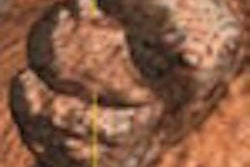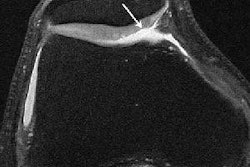WASHINGTON, DC - Researchers at Shriners Hospital in Houston have found a possible correlation between bone mineral density (BMD) and functional outcomes in pediatric osteogenesis imperfecta, a rare genetic disorder characterized by bones breaking easily, often from little or no apparent cause.
"Having an improved bone mineral density is directly related to how well the patient with osteogenesis imperfecta does in terms of functional outcome or how well they do overall," explained orthopedic specialist Dr. Robert Huang during a presentation this week at the 2005 American Academy of Orthopaedic Surgeons (AAOS) meeting.
"At least now we have a rationale for why we are trying to improve bone mineral density. Bone mineral density in and of itself can be an indicator of how severe the osteogenesis imperfecta is," Huang added.
For this retrospective study, the records of 24 consecutive patients with osteogenesis imperfecta were reviewed. The patients underwent dual-energy x-ray absorptiometry (DEXA), with BMD assessed in the lumbar spine and wrist.
In order to examine the correlation between BMD and functional outcomes, investigators used the Pediatric Outcomes Data Collection Instrument (PODCI). A statistical analysis was conducted using Pearson's correlation.
Looking at the PODCI score, they found significant relationships of lumbar spine BMD with upper extremity function (function, transfers, sports, and global function). Also, they observed significant relationships of wrist BMD with the upper extremity functional, sports, and global functional scores.
Huang said further studies are important for establishing these correlations. "This study was a cross-sectional analysis, a retrospective review," he said. "So currently we're working on a prospective study looking at patients with osteogenesis imperfecta to see what their bone mineral density is doing over an extended period of time."
Haung said he hopes for a larger patient population for longitudinal studies over the next five years. While DEXA is the gold standard for BMD assessment, Huang said his group may employ the more sophisticated quantitative CT analysis for future research.
By Jerry Ingram
AuntMinnie.com contributing writer
February 25, 2005
Related Reading
Digital hand atlas throws up puzzling results versus G&P atlas, December 28, 2004
Columbus Children's Hospital debuts pediatric radiography device, May 25, 2004
Misread scans often lead to osteoporosis diagnosis in children, March 22, 2004
Copyright © 2005 AuntMinnie.com



















